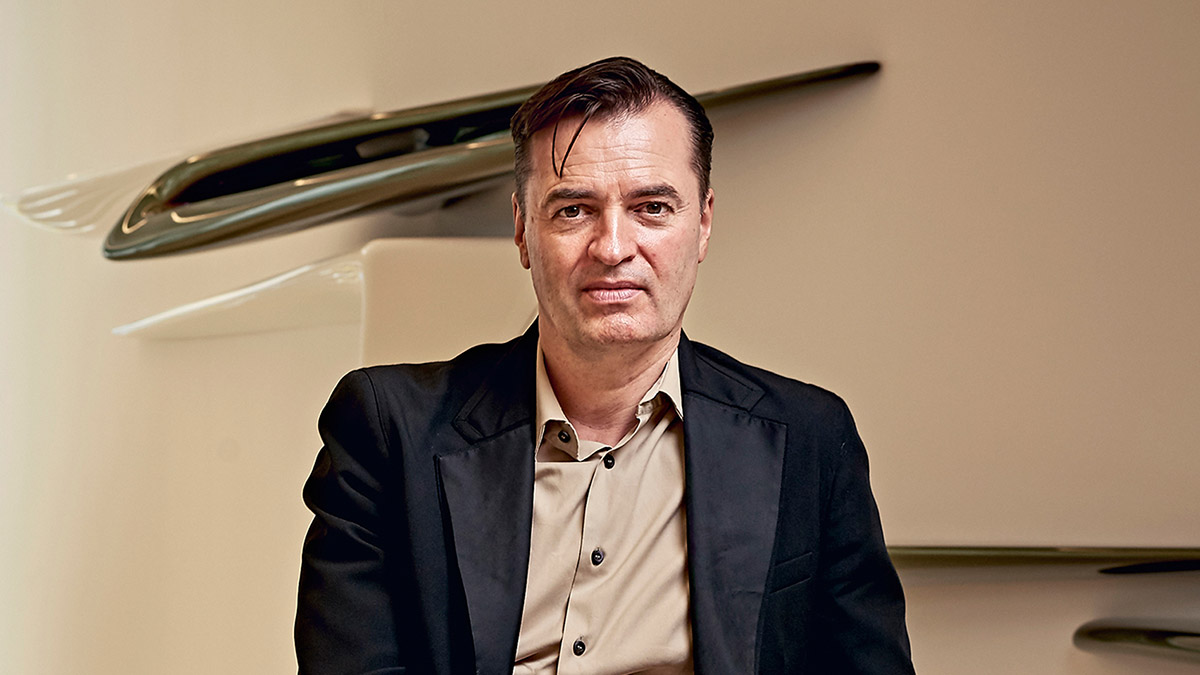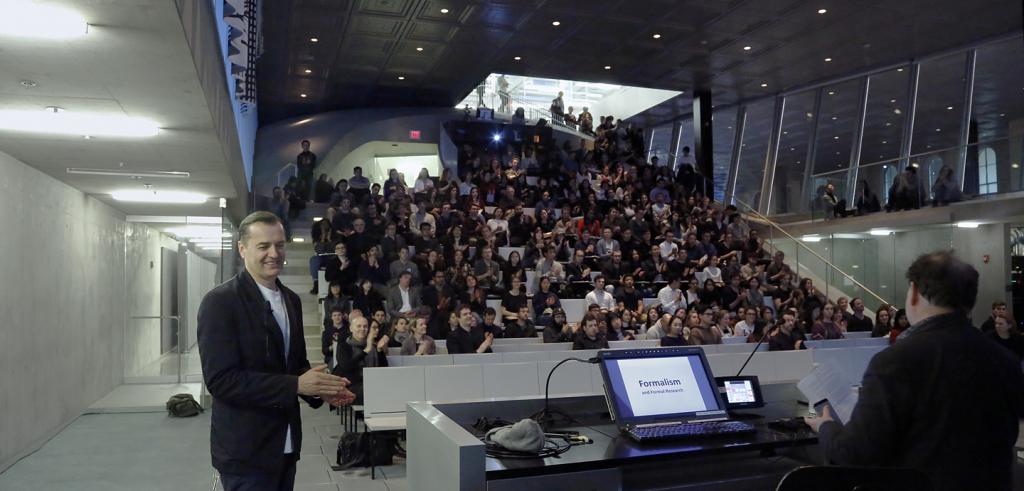Submitted by WA Contents
Current architecture education is detached from the profession, according to Patrik Schumacher
United Kingdom Architecture News - Jul 09, 2019 - 23:57 20342 views

Patrik Schumacher, the principal of Zaha Hadid Architects, criticised architectural education, saying that the current architecture education is disconnected from the profession and it doesn't pursue societal realities or needs as expressed in real (public or private) client briefs.
Schumacher, made his own criticisms on his Facebook page with 13 theses and his post, titled "13 theses on the crisis of architectural academia", explains how the academic world is not connected with the real architectural professionalism.
The architect also delivered his arguments over recent graduate architects, saying that students' portfolios, after a five-year education, don't include a single design that meets minimal standards expected from a contemporary competition entry.
Describing it "as a new global crisis" which will emerge soon, the architect stated that architecture schools operate like an art school and underlined that they are teaching "without any curriculum".
"Architecture schools operate like art schools without any curriculum. Accordingly architectural education is detached from the profession and from societal realities & needs as expressed in real (public or private) client briefs," said Schumacher.
The acclaimed architect also criticised educators since they have no professional experience as an architect, Schumacher added that teachers are using design studios as vehicles for their own path.
"Too many teachers don't have professional experience"
"Too many teachers without professional work or experience use design studios in schools of architecture as vehicles for their own, largely isolated pursuits with often highly idiosyncratic criteria of success," the architect added.
"The currently dominating model of pedagogy - the model of an unbounded diversity of experimentation - is an anachronistic hangover from the period after the crisis and end of modernism when the discipline had to brainstorm new ways forward."
"The crisis will be overcome when world architecture, once more, converges onto a hegemonic, unifying paradigm that allows for cumulative research, global application and then canonisation, just as modernism achieved in the 20th century," continued Schumacher.
"Current educational model made sense in 1980s"
Schumacher also discussed that the current educational model was quite productive at the Architectural Association School of Architecture (AA) and the Columbia University in the early periods and it produced the first seeds of parametric architecture in the 1990s and early 2000s, but it couldn't be proceeded later as an interface between academia and practice.
"The current educational model made sense and was very productive during the early period, at the AA and Columbia, and indeed generated the ingredients of parametricism in the 1980s and incubated its development throughout the 1990s and early 2000s as the new viable way forward," stated Schumacher.
"Integrated, cumulative research and design took place and started to interface with practice. However, in contrast to the successful Bauhaus transformation during the 1920s, the necessary institutional transformation away from the art school model to a science school model did not take place."
Previously, Schumacher had shared his thoughts about today's architectural education system in an exclusive interview with World Architecture Community and he said: "the current culture in most schools of architecture is unsatisfactory''. ''The schools are mired in confusion about society and architecture’s role within it."
"They are over—politicised, naturally without the capacity to grasp, let alone to resolve, the political issues that dominate its design and debate agendas'' he had added.

Patrik Schumacher on Formalism and Formal Research at the Cornell University. Image © William Staffeld / AAP
Schumacher is not the only architect criticizing today's architecture education
Schumacher is not the only architect criticizing today's architecture education. Reinier de Graaf, Partner at OMA, had said "American architectural education is deeply f***ed" in an exclusive interview with World Architecture Community.
De Graaf also stated that "there is a big gap between academia and architectural practice, and that there is an ignorance of the economic system that buildings are part of." According to the architect, the exorbitant price students pay for architecture education in countries like the US obstruct the learning process.
In addition, Winy Maas, Dutch architect, urbanist, researcher, co-founder of MVRDV and founder of The Why Factory, spoke to World Architecture Community in an exclusive interview and said: "Much of current type of education is about conformation, more than innovation".
"It will be wise to develop alternative tools within the educational system rather than other models like "copy-cat" or "simulation school," Maas added.
Read the full 13 theses on the crisis of architectural academia of Patrik Schumacher below:
1. Architecture schools operate like art schools without any curriculum. Accordingly architectural education is detached from the profession and from societal realities & needs as expressed in real (public or private) client briefs.
2. Too many teachers without professional work or experience use design studios in schools of architecture as vehicles for their own, largely isolated pursuits with often highly idiosyncratic criteria of success.
3. Students' portfolios after five years of studying might not include a single design that could meet minimal standards expected from a contemporary competition entry.
4. This is a global crisis that cannot be fixed by universities alone as it reflects the fragmentation and disorientation of our discipline.
5. The currently dominating model of pedagogy - the model of an unbounded diversity of experimentation - is an anachronistic hangover from the period after the crisis and end of modernism when the discipline had to brainstorm new ways forward.
6. The crisis will be overcome when world architecture, once more, converges onto a hegemonic, unifying paradigm that allows for cumulative research, global application and then canonisation, just as modernism achieved in the 20th century.
7. Only through convergence can a new basic, shared curriculum emerge, on the basis of which a multiplicity of cumulative and complementary research efforts can make a real difference for the development of new global best practice of professional and creative work.
8. The paradigm we are looking for is parametricism, the discipline's answer to the societal challenges and technological opportunities of our computationally empowered post-fordist network society. This paradigm has no viable rivals and has sufficiently matured to become global best practice very rapidly.
9. The current educational model made sense and was very productive during the early period, at the AA and Columbia, and indeed generated the ingredients of parametricism in the 1980s and incubated its development throughout the 1990s and early 2000s as the new viable way forward.
10. Integrated, cumulative research and design took place and started to interface with practice. However, in contrast to the successful Bauhaus transformation during the 1920s, the necessary institutional transformation away from the art school model to a science school model did not take place.
11. There are cycles of innovation. Creative work, research and discourse culture, including teaching patterns and personalities, in the middle of the cycle should be very different from the beginning of a new cycle. We are no longer in the infant phase of the new paradigm. Accordingly our culture and role models have to adapt. The AA school culture can initiate but not commit to, advance and work through a paradigm. The problem is that the seminal role the AA played in the eighties and nineties triggered the world-wide imitation of its culture at a time when these ways of working were getting in the way of further progress.
12. The lack of political adaptation to post-fordism got in the way too: the 2008 financial crisis, the political regression and economic stagnation since have so far prevented the hegemony of parametricism just as the 1929 crisis, fascism and WW2 had retarded modernism.
13. The political frieze on urban density, programmatic mixity and typological innovation blocks the competitive advantages of parametricism and retards its advance. These background conditions obscure the historical mal-adaptation of our discipline and of it’s teaching culture.
However: Some robust, interrelated, and mutually supportive seeds of a new school of architecture have emerged, survived and grown within the belly of the old school and point to promising future possibilities: AADRL, ICD/ITKE, B-Pro, DDRC Tongji, ...
Top image © MatthewJoseph
